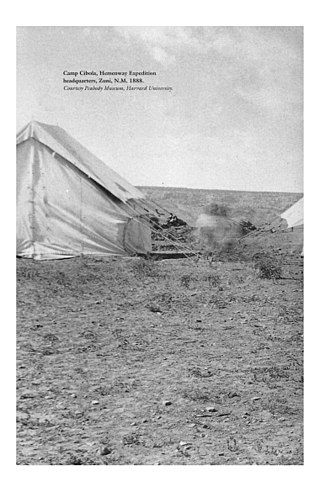Eugenics is a set of beliefs and practices that aim to improve the genetic quality of a human population. Historically, eugenicists have attempted to alter human gene pools by excluding people and groups judged to be inferior or promoting those judged to be superior. In recent years, the term has seen a revival in bioethical discussions on the usage of new technologies such as CRISPR and genetic screening, with heated debate around whether these technologies should be considered eugenics or not.

Biological anthropology, also known as physical anthropology, is a scientific discipline concerned with the biological and behavioral aspects of human beings, their extinct hominin ancestors, and related non-human primates, particularly from an evolutionary perspective. This subfield of anthropology systematically studies human beings from a biological perspective.
The Aryan race is an obsolete historical race concept that emerged in the late-19th century to describe people of Proto-Indo-European heritage as a racial grouping. The terminology derives from the historical usage of Aryan, used by modern Indo-Iranians as an epithet of "noble". Anthropological, historical, and archaeological evidence does not support the validity of this concept.
Osteology is the scientific study of bones, practised by osteologists. A subdiscipline of anatomy, anthropology, and paleontology, osteology is the detailed study of the structure of bones, skeletal elements, teeth, microbone morphology, function, disease, pathology, the process of ossification, and the resistance and hardness of bones (biophysics).
Archaeology is the study of human activity in the past, primarily through the recovery and analysis of the material culture and environmental data that they have left behind, which includes artifacts, architecture, biofacts and cultural landscapes.

Alois Ferdinand Hrdlička, after 1918 changed to Aleš Hrdlička, was a Czech anthropologist who lived in the United States after his family had moved there in 1881. He was born in Humpolec, Bohemia.

Aris Poulianos is a Greek anthropologist and archaeologist.

Jane Ellen Buikstra is an American anthropologist and bioarchaeologist. Her 1977 article on the biological dimensions of archaeology coined and defined the field of bioarchaeology in the US as the application of biological anthropological methods to the study of archaeological problems. Throughout her career, she has authored over 20 books and 150 articles. Buikstra's current research focuses on an analysis of the Phaleron cemetery near Athens, Greece.
Rodney Stuart Young was an American Near Eastern archaeologist. He is known for his excavation of the city of Gordium, capital of the ancient Phrygians and associated with the legendary king, Midas.

Nazi eugenics refers to the social policies of eugenics in Nazi Germany, composed of various ideas about genetics which are now considered pseudoscientific. The racial ideology of Nazism placed the biological improvement of the German people by selective breeding of "Nordic" or "Aryan" traits at its center. These policies were used to justify the involuntary sterilization and mass-murder of those deemed "undesirable".
This article lists historical urban community sizes based on the estimated populations of selected human settlements from 7000 BC – AD 1875, organized by archaeological periods.
Robert John Hopper, FSA was an archaeologist and historian of Ancient Greece. He was Professor of Ancient History at the University of Sheffield. He was Dean of the university's Faculty of Arts from 1967 to 1970.
Stephanus of Alexandria was a Byzantine philosopher and teacher who, besides philosophy in the Neo-Platonic tradition, also wrote on alchemy, astrology and astronomy. He was one of the last exponents of the Alexandrian academic tradition before the Islamic conquest of Egypt.

The Lyceum was a temple in Athens dedicated to Apollo Lyceus.
The American Journal of Biological Anthropology is a peer-reviewed scientific journal and the official journal of the American Association of Biological Anthropologists. It was established in 1918 by Aleš Hrdlička.

Stavros Zurukzoglu was an influential Swiss eugenicist.

Mugharet el-Zuttiyeh is a prehistoric archaeological site in Upper Galilee, Israel. It is situated 800 m (2,600 ft) from the Nahal Amud outlet, approximately 30 m (98 ft) above the wadi bed. It was found to house a fossil today known as the "Galilee skull" or "The Yabrudian Man".

The Petralona Cave also Cave of the Red Stones, a karst formation, is located at 300 m (984 ft) above sea-level on the western foot of Mount Katsika, about 1 km (0.62 mi) east of the village of Petralona, about 35 km (22 mi) south-east of Thessaloniki city on the Chalkidiki peninsula, Greece. The site came to public attention when in 1960 a fossilized archaic human skull was found. The cave had been discovered accidentally only a year earlier (1959) after erosion had left clefts in the rock. "Bejeweled" with impressive stalactite and stalagmite formations and holding an abundance of fossils, the cave soon attracted geologists and paleontologists. After decades of excavations the cave is open to the public and scientific work is documented and presented in an adjacent archaeological museum.
The history of eugenics is the study of development and advocacy of ideas related to eugenics around the world. Early eugenic ideas were discussed in Ancient Greece and Rome. The height of the modern eugenics movement came in the late 19th and early 20th centuries.

The Hemenway Southwestern Archaeological Expedition occurred between 1886 and 1894 in the American Southwest. Sponsored by Mary Tileston Hemenway, a wealthy widow and philanthropist, the expedition was initially led by Frank Hamilton Cushing, who was replaced in 1889 by Jesse Walter Fewkes. It was considered to be a major scientific archaeological expedition, notable for the discovery of the prehistoric Hohokam culture.
Sevasti Trubeta, »Griechisch-deutsche rassenanthropologische Begegnungen (1886–1950)«, in: Alexandros-Andreas Kyrtsis und Miltos Pechlivanos (Hg.), Compendium der deutsch-griechischen Verflechtungen, 20.10.2020, URI: https://comdeg.eu/compendium/essay/99306/.










